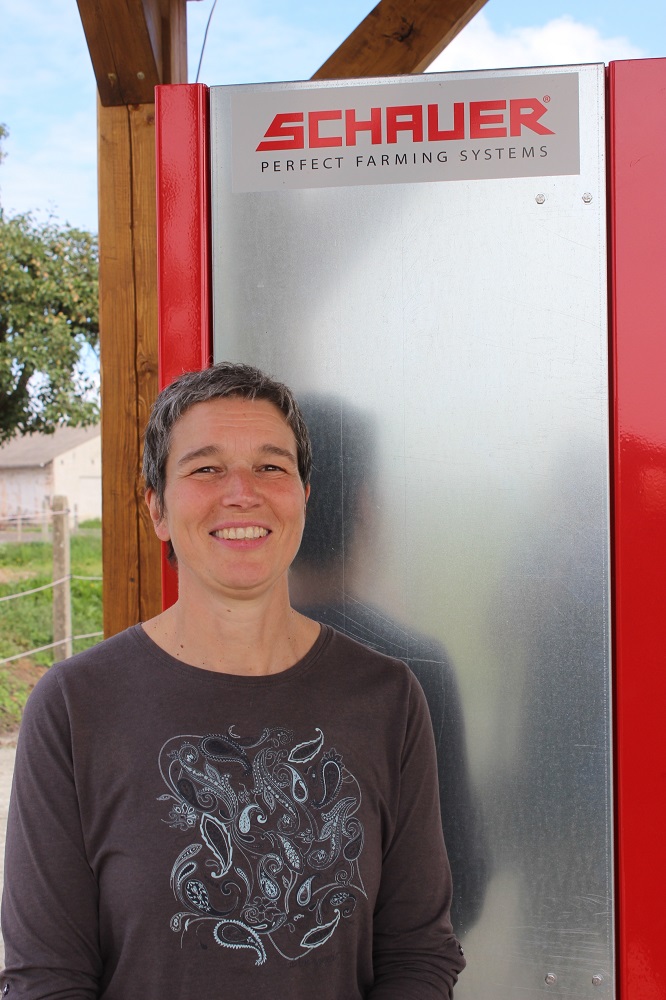Horse Farm Frantisek Coudek
What all horse breeders should know about Active Horse Systems:
Schauer Agrotronic has been developing its Active Horse Systems for almost 20 years. Schauer is represented by the company Agrico Trebon in the Czech market, which also supplies several high-quality elements and accessories for horse keeping and has many years of experience in this field. In the newspaper Zemedelec No. 35, we reported the first Active Horse stable in the Czech Republic - on the farm of Frantisek Coudek in Mazice near Veseli nad Luznici.
Vladislav Fuka
The horses in an Active Horse stable can move freely and are equipped with transponders. They alone determine their activities. The horses are constantly moving in the fresh air because they enjoy the freedom and casually walk around the supply stations for feed and water. They can freely access the feeding stations for roughage and concentrate feed, the drinking area, the resting area, the paddock/turnout area, the manure area, and possibly the pasture. This is why it is essential to implement the concept adapted to the local conditions with a sensible arrangement of the various functions.
And Carola Brandt, sales manager for horse stables, is the guarantor for this at Schauer. With her wealth of experience and positive mentality, she motivates other people and knows what horses need and want.

Can you briefly describe the Active Horse System?
This stabling concept is based on horses' natural needs and considers their physiological requirements, which they have had since time immemorial. At the same time, it facilitates the work of horse owners and increases their productivity.
How many such facilities exist already in Europe?
About 400, most of them in southern Germany. But they are also popular in Switzerland, Austria, Luxembourg, Belgium and France.
The total number of horses stabled in a Schauer Active Horse System will probably not be that high?
The average number of horses in an Active Horse Stable is between 30 and 40, which means about 16,000 horses use this stabling concept in total.
But that represents a meagre percentage of the total number of horses in these countries.
Yes, about three per cent. The box stables are still being built - and I admit I don't understand why. Holding horses in boxes requires a lot of work-related to feeding and their movement, turn out, cleaning. In an active stable, the horses take care of themselves, and they also get so much exercise. Moreover, a classic box stable requires work to be performed at regular intervals. In an active-movement stable, a groom can manage their time more flexibly. It is much freer horse husbandry, both for horses and their owners.
This can save working time and manpower.
In my experience, we can save 30 to 50 per cent of working time in a day. One groom takes care of 30 horses every day with the help of a small articulated loader. The workload is manageable, and the horses are not unkempt. In addition, the distribution of work is very flexible; the groom can plan the tasks independently of the animals. Box stalls don’t allow for this flexibility without restricting the horses in the box for the duration of the work.
Higher productivity is not the only advantage of this new technology.
It is especially beneficial for horses: the horses are calmer, more balanced and healthy. They have constant natural exercise in the fresh air, which reduces the risk of respiratory diseases, a problem in almost all stables. In addition, the risk of colic is reduced by eating small portions of feed throughout the day. In general, not the only colic is dangerous for horses, but often also osteoarthritis, which is caused by unsuitable stabling and lack of exercise. If horses do not regularly strain their muscles and tendons, then sports injuries are widespread, often with a sad ending.
The feed savings are also not to be neglected.
The basis for horse nutrition throughout the year is good quality hay; the concentrates and minerals are only supplements. If we can give individual horses the correct dosage of hay on time, the savings on this increasingly expensive feed are enormous. And our reliable feeding systems can do that. Individual animals can be fed ad libitum only once a day; the rest is rationed via automatic feeders.
What prevents most breeders from adopting this natural way of horse breeding and keeping?
It is, of course, sticking to the known and the familiar. In horse husbandry, this means box stabling. In my experience, it takes 20 years for new trends and husbandry systems to become adopted by the masses and established in the minds of animal owners. Horse owners are generally very conservative; they do not consider that the use and handling of horses have changed. In the past, horses were used as a means of transport and a work animal, they worked hard all day and only went to rest in the box in the evening. Today, the horse has shifted to the position of a hobby animal. Horses are mostly kept in boarding facilities. Many horse enthusiasts or riders have stabled their horses there.
In many cases, the horses spend 24 hours in a box with an area of 12m2, and only in exceptional cases, they can spend short periods in the paddock. But horses need natural and active exercise. I must say that breeders have not yet realised that the way we use horses has changed.
Could you characterise the new active stable in Malzenice which you designed?
I am thrilled with the result; I like it a lot. Suppose I compare it with similar projects in Switzerland, where the amount of space for each animal is limited, and all the facilities are too close together. Here, there was enough space for all the facilities and new buildings to be erected naturally. This is appreciated not only by the horse owners and riders but in particular by the horses. They are calmer and more relaxed.


